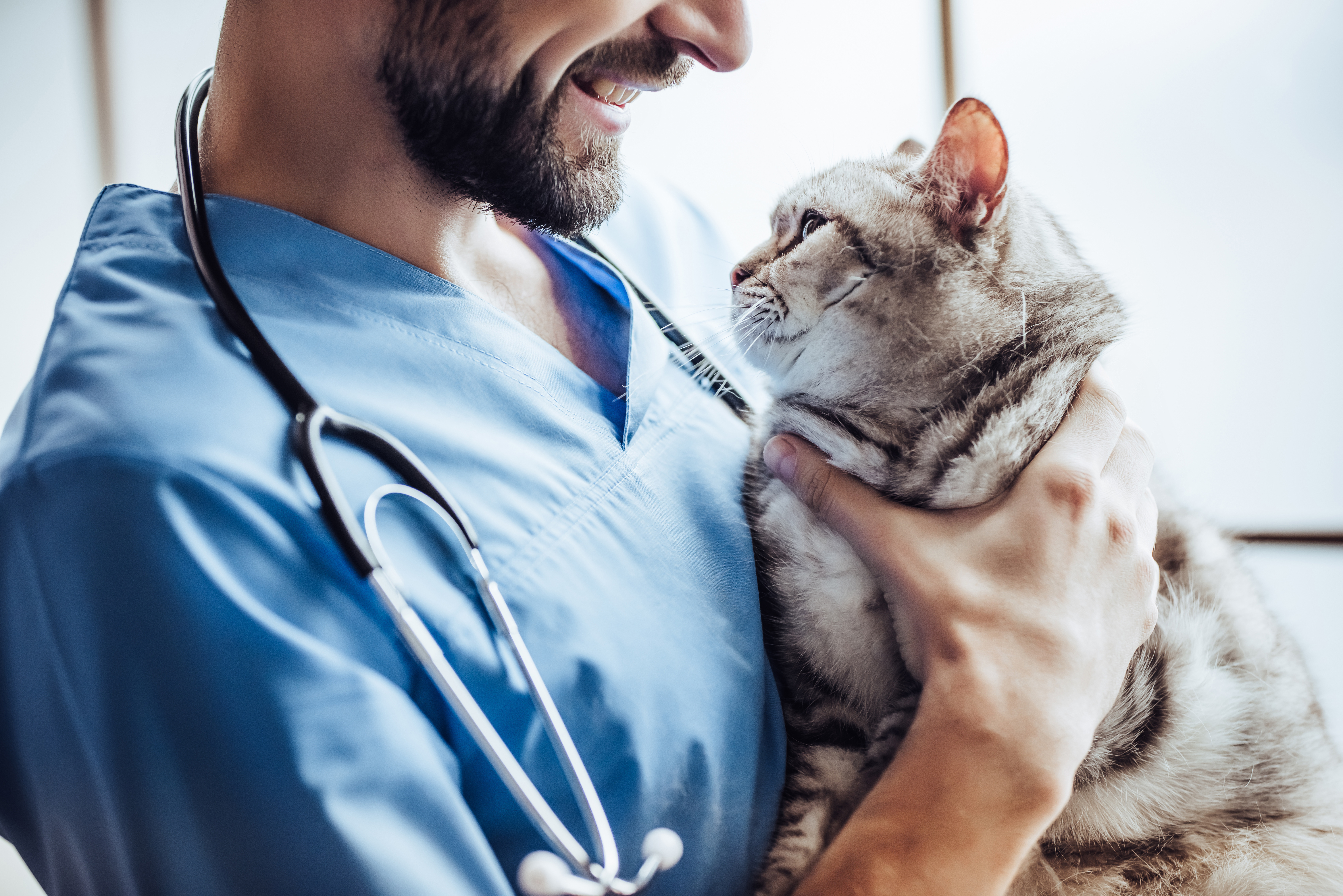Key Takeaways
- Feline hyperthyroidism is an endocrine disorder where a cat's thyroid gland produces excessive thyroid hormones, leading to health complications
- Common symptoms include weight loss with increased appetite, heightened energy or restlessness, and gastrointestinal issues
- The condition can be caused by benign tumors on the thyroid gland, exposure to certain environmental toxins, or genetic predispositions
- Diagnosis involves physical examinations, blood tests to measure thyroid hormone levels, and imaging techniques like ultrasounds
- Treatment options include medications, surgical removal of the thyroid gland, radioactive iodine therapy, or dietary adjustments

Feline hyperthyroidism, a condition often seen in our feline companions, is characterized by an overactive thyroid gland producing an excessive amount of thyroid hormones. These hormones play a pivotal role in various physiological processes, including metabolism, growth, and development. When in overdrive, they can wreak havoc on a cat's system, leading to a myriad of health issues. As with many health conditions, early detection and intervention are crucial.
The prevalence of feline hyperthyroidism has been on the rise in recent years, making it one of the most common endocrine disorders diagnosed in domestic cats, particularly in senior and geriatric populations. The exact reasons for this surge are still under investigation, but it underscores the importance of regular veterinary check-ups and an informed cat-owning community. Consider pet insurance to help cover the costs of diagnosing and treating feline hyperthyroidism.

Understanding the Thyroid Gland
The thyroid gland, a vital component of a cat's endocrine system, is a small but essential butterfly-shaped organ located in the neck, adjacent to the trachea. This gland, though diminutive in size, holds paramount importance in regulating a multitude of bodily functions. Comprised of two lobes that lie on either side of the windpipe, the thyroid is responsible for producing and releasing thyroid hormones, chiefly thyroxine (T4) and triiodothyronine (T3).
These hormones have a profound influence on a cat's overall health, affecting everything from metabolism rate, body temperature, and energy levels to growth and development in kittens. A balanced production of these hormones is essential, as both an excess and a deficiency can lead to significant health complications. Understanding the anatomy, location, and function of the thyroid gland is pivotal for cat owners, as it underscores the importance of regular health check-ups and the potential consequences of thyroid-related disorders.
Affected Breeds of Hyperthyroidism in Cats
Feline hyperthyroidism is a condition that doesn't discriminate, impacting cats across a diverse range of breeds. However, some breeds appear to have a heightened susceptibility. While the definitive genetic and breed-specific predispositions are still under investigation, anecdotal evidence and clinical observations suggest that certain breeds, including the Siamese, Himalayan, and Maine Coon, might be at a slightly elevated risk.
It's essential to note that while breed can be a factor, age often plays a more significant role, with middle-aged to older cats being more commonly diagnosed with this condition. Regardless of breed, proactive monitoring for symptoms and regular veterinary visits are imperative. Recognizing and understanding breed predispositions can aid cat owners in being more vigilant about potential signs and in seeking early and appropriate medical intervention.
Causes of Feline Hyperthyroidism
Unraveling the complexities behind feline hyperthyroidism requires a deep dive into its potential causes, and while research is ongoing, several key factors have emerged as potential culprits. Foremost among these are tumors and growths on the thyroid gland. Benign adenomas, non-cancerous growths, are most commonly responsible for the overproduction of thyroid hormones. However, in rare cases, malignant tumors can also be the cause. Beyond these physical anomalies, dietary and environmental factors may play a role.
Recent studies have begun to explore the potential links between certain cat foods, environmental contaminants, and the onset of hyperthyroidism. For instance, chemicals like polychlorinated biphenyls (PCBs) and polybrominated diphenyl ethers (PBDEs), commonly found in household products, are under scrutiny for their potential thyroid-disrupting effects.
Lastly, while all cats can develop hyperthyroidism, there's mounting evidence suggesting a genetic predisposition in certain breeds or familial lines. This genetic link, while not fully understood, underscores the importance of being aware of a cat's lineage and potential health risks. Awareness, early detection, and understanding the myriad of causes are paramount in managing and potentially preventing the onset of this prevalent condition.
Symptoms and Diagnosis
Decoding the intricacies of feline health is a task that demands acute awareness, particularly when confronting the elusive specter of hyperthyroidism. This condition, often shrouded in a medley of symptoms, presents a tableau of signs that cat aficionados should be astutely observant of. A marked weight loss, even in the face of an escalated appetite, is frequently the initial red flag. This puzzling juxtaposition of increased food intake and diminishing weight is a quintessential indicator of thyroid imbalance.
Additionally, cats may manifest an unexpected surge in energy, bordering on hyperactivity, a sign especially conspicuous in typically sedentary senior cats. Gastrointestinal upsets, manifesting as vomiting or diarrhea, can further complicate the clinical picture. Beyond these tangible symptoms, hyperthyroidism may cast its shadow on a cat's behavior. Felines might undergo a transformation from being serene to irritable, or they might vocalize more frequently or at odd hours.
When it comes to diagnosis, veterinarians employ a multi-pronged strategy. A meticulous physical examination lays the groundwork, with particular attention paid to the neck area. Blood tests, specifically assessing T3 and T4 thyroid hormone levels, are the gold standard in confirming the diagnosis. In some cases, further imaging, like ultrasounds, might be requisitioned to visualize the thyroid gland and discern any abnormalities. Through the synergy of keen observation and precise diagnostics, hyperthyroidism can be accurately identified and addressed, ensuring our feline companions continue to thrive.

Treatment Options
When it comes to the well-being of our cherished feline companions, understanding the treatment landscape for conditions like hyperthyroidism becomes paramount. Thankfully, a suite of effective interventions is available to veterinarians and cat owners alike. Medication often serves as the first line of defense. Drugs such as methimazole act to reduce the production and release of excess thyroid hormones.
While they offer the benefit of non-invasiveness and can be adjusted based on the cat's needs, potential side effects like vomiting, lethargy, or itchiness necessitate regular monitoring and consultations with a veterinarian. For those seeking a more definitive solution, surgical removal of the thyroid gland offers promise. This procedure, though intricate, can lead to a complete resolution of the condition. Post-operative care and monitoring are essential, with most cats making a full recovery. Another avant-garde treatment is radioactive iodine therapy. By administering a controlled dose of radioactive iodine, overactive thyroid cells are effectively targeted and destroyed. Celebrated for its high success rate and minimal side effects, it's fast becoming a preferred modality for many practitioners.
Lastly, dietary management and therapy provide an adjunct or alternative to traditional treatments. Specific therapeutic diets, low in iodine, can help manage thyroid function in some cats. As with all health decisions, a collaborative dialogue between the pet owner and veterinarian ensures the best course of action tailored to each individual cat's needs and circumstances.
Living with a Hyperthyroid Cat
Embracing the journey of caring for a hyperthyroid cat demands patience, understanding, and a dash of adaptability from their human counterparts. As this endocrine disorder can significantly alter a feline's behavior and health status, certain adjustments and care considerations become imperative for cat owners. Firstly, daily routines might need tweaking to accommodate the cat's heightened energy or increased appetite.
It's also crucial to monitor for any adverse reactions or side effects if the cat is on medication. This vigilant observation ensures swift intervention should any complications arise. Beyond daily observations, regular check-ups with the veterinarian become the cornerstone of managing this condition. These periodic assessments, often inclusive of blood tests, ensure that the thyroid hormone levels are in check and the chosen treatment regimen remains effective. But perhaps the most vital aspect of this journey is the symbiotic relationship between the cat owner and the veterinarian.
Ongoing, open communication fosters a collaborative environment where concerns, observations, and potential adjustments to the treatment plan can be discussed freely. With a blend of attentive care at home and expert guidance from veterinary professionals, living with a hyperthyroid cat transforms from a challenge into a testament of the enduring bond between pets and their owners.
Prevention and Risk Factors
The intricate tapestry of feline health often presents patterns that, if discerned early, can weave a path towards prevention and proactive care. In the realm of hyperthyroidism, understanding the risk factors becomes the linchpin for safeguarding our feline friends. Certain elements, such as age, environmental toxins, and potentially even breed, have been spotlighted as potential contributors to the onset of this condition.
Exposure to household chemicals, like flame retardants or certain pesticides, might elevate the risk, underscoring the importance of a safe and controlled environment. While the complete prevention of hyperthyroidism remains an elusive goal, there are practical steps owners can take. Regularly scheduled veterinary check-ups, coupled with a keen observation of any behavioral or physical changes, can aid in early detection.
Furthermore, offering a balanced diet, minimizing exposure to potential environmental toxins, and being informed about the condition can tilt the scales in favor of prevention. The clarion call here is early detection. Recognizing subtle shifts in appetite, energy levels, or weight can pave the way for timely interventions, ensuring that our cherished cats lead healthier, more vibrant lives.
Case Studies
“…My 14 y/o cat was diagnosed with hyperthyroid six months ago. It seemed like it was caught before there was damage to his vital organs and he is taking prescribed meds twice a day. But he has completely changed. He no longer likes to sit in a lap, get stroked, and gets startled all the time. His energy is really low and while he is eating and voiding, he isn't playful. Anyone else experienced this? I will take him to the vet soon if this continues..”
From u/odezia “…I have a 9 year old tortie girl who was just diagnosed with hyperthyroidism. I’d like to pursue iodine radiotherapy, but the vet said she may have kidney disease and/or other conditions her thyroid is currently masking so the best option is medication until her levels are under control and no other issues are uncovered.
The problem: basically no medication is going to go over well. She was always a moody cat (tortitude) but this condition has increased her irritability and tendency to bite and claw. She has been sensitive to touch and snaps at me quickly...”

Conclusion
Hyperthyroidism stands as a sentinel, reminding us of the intricate balance that governs our cats' well-being. Its causes, symptoms, and treatments are crucial in ensuring that our feline companions lead lives rich in vitality and free from undue suffering.




























